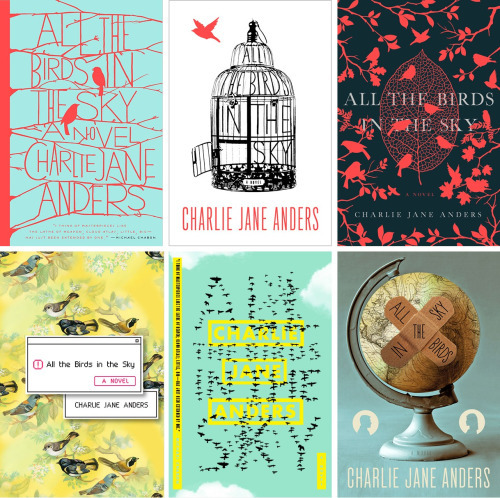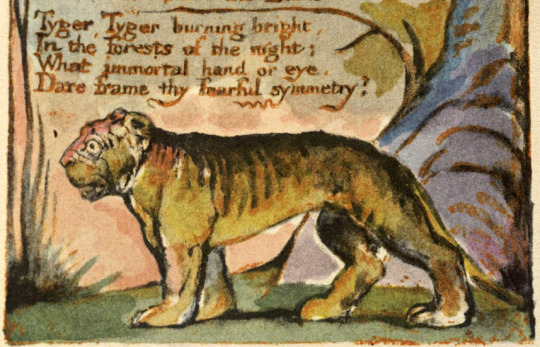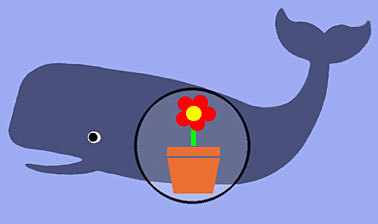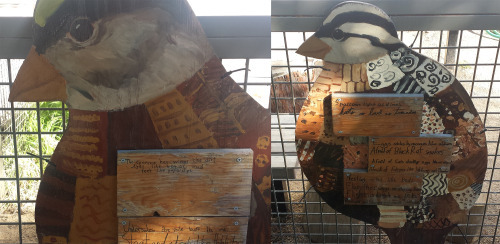Charlie Jane Anders's Blog, page 44
December 29, 2015
"Into each generation of science fiction/fantasydom a master absurdist must fall, and it’s quite..."
Into each generation of science fiction/fantasydom a master absurdist must fall, and it’s quite possible that with ALL THE BIRDS IN THE SKY (Tor/Tom Doherty, $25.99), Charlie Jane Anders has established herself as the one for the Millennials…
It’s complex, and scary, and madcap, but isn’t that what life is like now, for people who finish school with their futures mortgaged and their dreams pre-measured? Amid endless wars and environment-destroying pipelines and elitist think tanks that either do nothing or might bring about the quantum collapse of reality, Anders seems to say, there’s really not much anyone can do but laugh — and persevere. The result is as hopeful as it is hilarious, and highly recommended.
”- N.K. Jemisin, The New York Times Book Review
December 28, 2015
I dearly love the final cover of #AlltheBirdsintheSky, but the...

I dearly love the final cover of #AlltheBirdsintheSky, but the alternate covers that they almost used are also just incredible. I wish we could have used all of them somehow.
December 27, 2015
Rule One: Thou Shalt Not Waste The Reader’s Time

OK, so there are NO RULES when it comes to writing. Whatever works, works. But the above rule, which I’ve heard from a tons of writers over the years, is the closest thing to a real iron-clad thing that I’ve ever heard. I obsess about this all the time – how to make sure I’m not wasting anybody’s time with self-indulgent drek. Your reader has other things to do with their life, they’re busy, they’ve trusted you to tell them a story and you owe it to them to respect that their time is valuable. I always try to cut out everything that doesn’t feel essential for the story I’m telling, and just tighten, tighten, tighten as much as I can. I show my work as little as I can—I may have spent hundreds of hours obsessing about the details of how something works, but the reader doesn’t need to see that – they just need to see that it makes sense, and it works, and it’s cool. But at the same time, I’m happy to read your 10-page description of a meal someone is eating, or your chapter about whale blubber, or whatever. As long as it’s interesting in its own right, and it illuminates something about the characters and the world that helps me get into the story, then I’m there. So “don’t waste your reader’s time” is an elastic concept – but that doesn’t mean you shouldn’t think about it, like ALL THE TIME.
Image by Arjan Richter/CC
December 24, 2015
That Fearful (Lack of) Symmetry

I love symmetry. Always have. There’s just something so cool about a story where things parallel each other, or everything comes together in a neat way. My first novel, Choir Boy, is totally symmetrical in structure, because the second half of the book mirrors the first in a lot of ways. It has a clear halfway point, and the same events happen in both halves, in reverse.
In All the Birds in the Sky, though, I had to break out of the symmetrical mindset. And this drove me a little nuts at times. For one thing, the two halves of the book were absolutely not going to match up in any way, because of the thing where the characters start out as kids and then become adults. But the bigger temptation was to make the two main characters—the witch, Patricia, and the mad scientist, Laurence—have storylines that match up every step of the way. If something happens to Laurence, a similar event should happen to Patricia. That quickly started to feel like a straitjacket, because it meant the characters didn’t get to follow their own paths in a natural fashion. Sometimes, the most interesting choice was to have them dealing with wildly different situations, and work with the contrast. The less symmetrical the book got, the more I could see the shapes of the storylines.
I still think symmetry is beautiful, though, and I still love the idea of things that happen in perfect counterpoint. You get a lot of sparks and interesting moments from having things mirror each other—even if they way they reflect each other is by moving in opposite directions. It’s just an elegant way of doing things. But sometimes a messier structure has the benefit of letting you draw lots of connections between different moments, or different storylines, until you’ve got a kind of web of connections. And that can be interesting to explore, too.
December 23, 2015
"The road to creativity passes so close to the madhouse and often detours or ends there."
- Ernest Becker, The Denial of Death
December 22, 2015
Books That Ask the Big Questions

Maybe it’s because my dad was a philosophy professor, but I’ve always had a huge soft spot for books that dared to ask the huge, unanswerable questions about life and existence. Like the Hitchhiker’s Guide to the Galaxy (pictured above!). When you sit down to write a book, it feels kind of arrogant, maybe even a little crazy, to think that you can have something to say about the Big Ideas of the nature of the universe and whatnot – but you don’t have to answer these questions, just shed some light on them. I feel like I will always love a book for having big ideas, even if it leaves me having to figure out a lot of stuff on my own afterward. Actually, I’ll especially love any book that leaves me trying to figure out stuff on my own after I’m done reading. What do you think? And what’s your favorite book that asks the big questions?
December 21, 2015
"Sometimes Laurence zoned out and imagined walking on another Earth-like planet. The weird gravity...."
- All the Birds in the Sky, p. 239
Ugh. The “Mary Sue” Thing.

So unless you were living under a rock over the weekend, you probably know that some people decided that Rey, the heroine of Star Wars: The Force Awakens, is a Mary Sue. Which, sigh. I might write a thing on io9 later about how ridiculous this is, but it’s just ridiculous.
But this got me thinking about the fact that this is kind of a catch-22. Because people will only sympathize with characters who are good at what they’re doing—pretty much guaranteed. If your character fumbles or is too incompetent, people start not wanting to identify with them. This is an even bigger problem in science fiction, which is so closely linked to competence porn. I personally prefer characters who don’t make stupid mistakes and who can handle themselves in a tough situation. But if your character is female, then you know that if she does too well at stuff, then people on the internet will call her a “Mary Sue.” It’s a no-win situation. I’ve sweated bullets in the past over how to make my female characters both competent and yet “realistic” enough that nobody will claim they’re unbelievably good at stuff. In particular, this came up a lot with Patricia, the female lead of All the Birds in the Sky. She gets to be incredibly powerful with her magic, and I stressed out about whether people would bust out with the dreaded “Mary Sue” designation. In the end, I had to just let it go, and let her be as complicated and real and flawed a character as she could be—while also being very good at the thing she’s studied for years.
December 20, 2015
Spotted in front of a local school: “The sparrow has wings like...

Spotted in front of a local school: “The sparrow has wings like dirt, eyes like beads, and feet like paperclips. Undersides are pale buff like me. Stout and stocky like Hobbits.” “Sparrows light as dimes, hoots as loud as tornadoes. Eggs stolen by raccoons like robbers. Afraid of Black Rat Snakes. Afraid of Cats stealing eggs like evil dragons. Afraid of falcons like lightning and thunder.”




